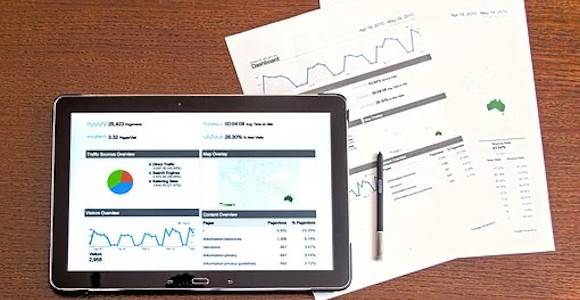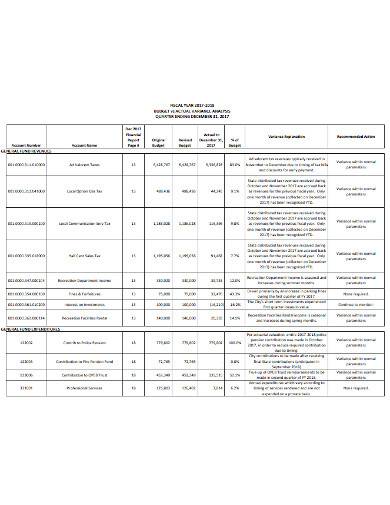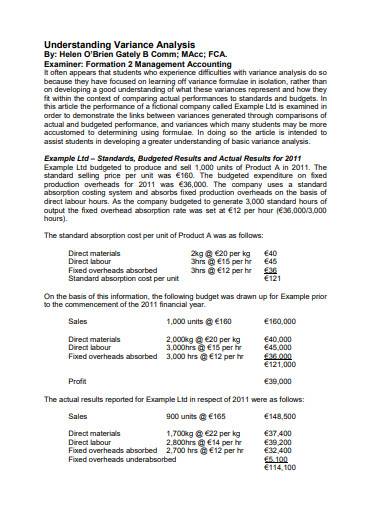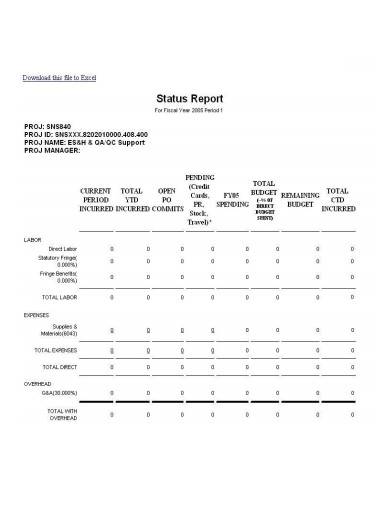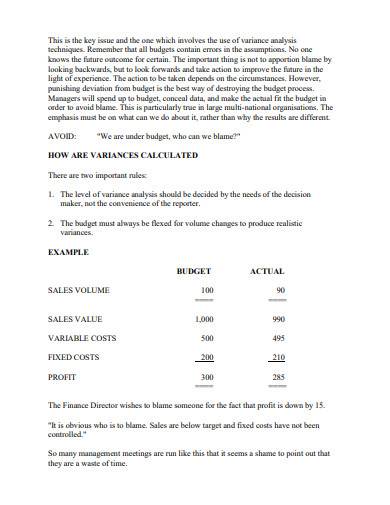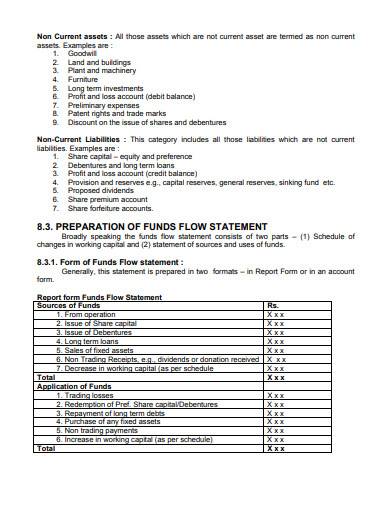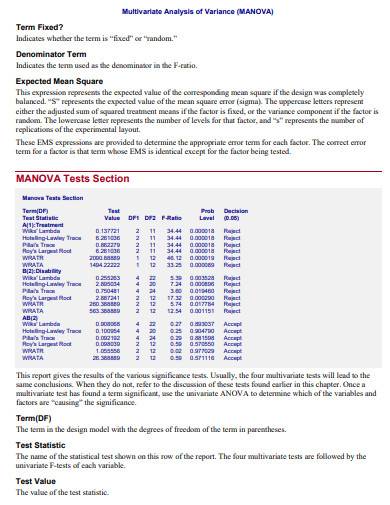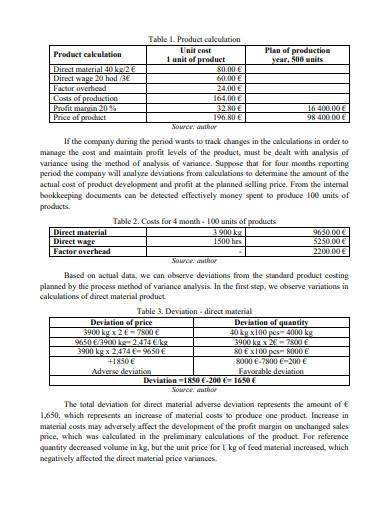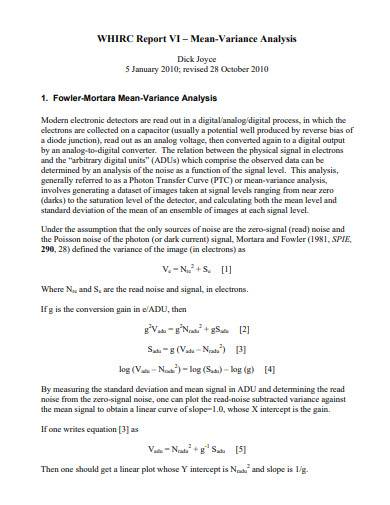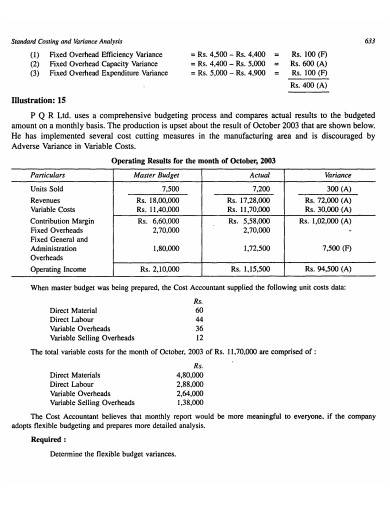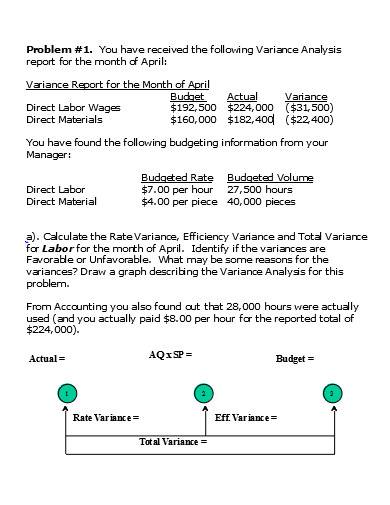There exists a unique difference between standard costs and budgeted costs in companies or corporations. The book “Standard Costing, Variance Analysis, and Decision-Making” explained that the principal differences between them lie in their scope. Both are concerned with providing cost limits for controlling. But budgeted costs impose limits to total cost for a company and standard costs are attached to products and to individual manufacturing operations. In this article, we have some informative guide and downloadable variance analysis report examples to guide you in your work. Keep on reading!
FREE 11+ Variance Analysis Report Samples in PDF | MS Word
1. Budget and Actual Variance Analysis Report
2. Sample Understanding Variance Analysis Report
3. Variance Analysis Status Report Template
4. Budgetary Control Variance Analysis Report
5. Standard Variance Analysis Report Template
6. Variance Analysis Financial Report
7. Formal Variance Analysis Report Template
8. Multivariate Analysis of Variance Report
9. Product Variance Analysis Report
10. Fowler Variance Analysis Report
11. Standard Costing and Variance Analysis Report
12. Variance Analysis Monthly Report
What is a Variance Analysis Report?
A variance analysis report is a significant document that is aimed on providing in-depth, comprehensive explanations of the comparisons made from financial outcomes with the actual financial outcome Simply, it is used to make a thorough analysis concerning the difference between financial budgets and actual financial performance of a particular company or business firm.
How to Write a Variance Analysis Report
Below are some easy-to-follow tips that indicate how you will effectively write a variance report:
1. Set up your primary objectives for analysis
Richelle E. Goodrich said that you must “know what your objective is. Anything that does not contribute to that objective is unnecessary; let those things go.” So, think on your main purpose for your analysis work and start setting up your primary objectives for your variance analysis report.
2. Collect, analyze, and summarize data
Use several data research and analytical tools, as well as your company’s financial statements, balance sheet, and many more when you work on your variance analysis research. Then, you need to provide a separate analysis for cost and schedule variances. After collecting the data, you must create a summary so that a reader can clearly understand them.
Highlight the main value for each experimental condition and a measure of dispersion. Note that it is very integral that you include both of these while presenting the results of your report.
3. Make a structured outline
Then, make a structured outline from the data you collected and analyzed. A structured outline is very important in making your report simple, concise, and clean, helping your readers fully understand the explanations and overall message of your report. Plus, you can incorporate some charts, graphs, tables, and other visual diagrams to demonstrate and make clarifications on your variance analysis.
4. Edit or revise your report if necessary
The last essential step in writing a variance analysis report is performing some necessary edits or revisions. Ask your work colleagues and other professionals in your field regarding the quality and content of your report. After knowing their own suggestions and comments on your work, apply them on your analysis report.
FAQs
When making a variance report, you need to highlight two separate values and the extent of difference between the two financial values. It can be shown both in absolute terms and through percentage difference. [/ns_row ] A variance analysis is an important document because it is beneficial in managing financial budgets when you control budgeted contrary to actual costs. In this way, it will create some necessary adjustments for a company’s business goals, objectives, or strategies.How to make a variance report?
Why is variance analysis important?
Some types of variance analysis are variable cost variances, fixed production overhead variances, and sales variances.What are the types of variance analysis?
The three steps of the data analysis process are evaluation, refinement, and summarization.What are the three steps of data analysis?
In conclusion, writing a financial statement variance analysis report is a significant step in creating meaningful analysis and interpretations of factorial designs of financial values, specifically budgeted and actual financial values in a certain company. We recommend that you need to develop a readable style and learn how to interpret variance data effectively that are easy to comprehend. Here are some of our downloadable and printable variance report samples available in different kinds of formats. Simply click the templates in this article and start downloading now!
Related Posts
Survey Report
Sample Visit Reports
Investigation Summary Report Samples & Templates
FREE 9+ Investigation Summary Samples in PDF | DOC
FREE 8+ Project Audit Report Samples in PDF
FREE 6+ Retail Daily Report Samples in PDF | MS Word
FREE 7+ Construction Field Report Samples in PDF | MS Word
FREE 15+ Blank Incident Report Samples in MS Word | Pages | Google Docs | PDF | AI
FREE 15+ Restaurant Report Samples in MS Word | Google Docs | Pages | PDF
FREE 10+ Sales Activity Report Samples in MS Word | Pages | Google Docs | Google Sheets | Numbers | MS Excel | PDF
FREE 15+ Company and Financial Report Samples in MS Word | Pages | Google Docs | Google Sheets | Numbers | MS Excel | PDF | AI | Publisher
FREE 10+ Vehicle Report Samples in MS Word | Pages | Google Docs | MS Excel | Numbers | PDF
How to Write an Impressive Data Audit Report Samples in MS Word | Pages | Google Docs | PDF
FREE 10+ Project Summary Report Samples [ Final, Equipment, Pilot ]
FREE 10+ Discharge Summary Report Samples [ Electronic, Materials, Timely ]
